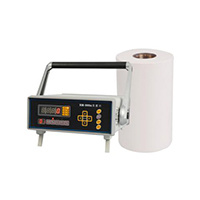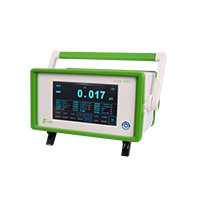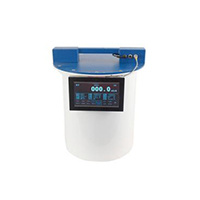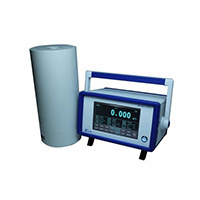Products/PRODUCTS CENTER
Product Classification/PRODUCT CATEGORIES
We focus on nuclear technology applications. Industry experts with decades of experience are the company's wealth, relying on their knowledge and rich experience, the company has been able to grow rapidly.
Field calibration device for environmental gamma radiation air specific release kinetic energy rate monitor
YD-110 mobile on-site gamma radiation air specific energy release rate monitor on-site calibration device, mainly used for on-site calibration of fixed environmental dose rate monitor, the device has all the functions of on-site standard radiation field, uses solid sealed 137Cs to provide reference radiation quality, the surface dose of the irradiator is less than 1 μSv/h when the shutter is closed, and has the function of remote control shutter, with safety interlock device, to meet the safety requirements for on-site use.
Classification:
Standard equipment for measurement
Product accessories:

24-hour free hotline
Product Description
YD-110 mobile on-site gamma radiation air specific energy release rate monitor on-site calibration device, mainly used for on-site calibration of fixed environmental dose rate monitor, the device has all the functions of on-site standard radiation field, uses solid sealed 137Cs to provide reference radiation quality, the surface dose of the irradiator is less than 1 μSv/h when the shutter is closed, and has the function of remote control shutter, with safety interlock device, to meet the safety requirements for on-site use.The range of the output dose rate range of the mobile irradiator meets the conventional requirements of the fixed gamma radiation air ratio release energy rate monitor, the irradiator is small in size and placed on the 360-degree pan-tilt of the camera tripod, with laser alignment and laser ranging functions, and automatically calculates the radiation dose value of the measurement point.The output dose value of the irradiator can be directly traced back to the national standard, and can also be calibrated on site through a portable standard gamma radiation air ratio kinetic energy meter.The irradiator is made of tungsten alloy, which is compact and convenient, ingenious in design and convenient in source exchange. It can be replaced on site by the user's source. It can be calibrated on site by portable standard γ radiation air ratio kinetic energy rate meter to obtain accurate dose output. The difficulties of long-distance transport of radioactive sources are avoided.
The device is equipped with a portable standard gamma radiation air ratio release energy rate meter as a transfer standard (including measurement verification certificate), with on-site calibration capability, and combined with the measurement of the portable standard gamma radiation air ratio release energy rate meter, the establishment of measurement mode procedures, the field scattering and field influence factors to correct.
Technical indicators:
1. Reference radiation quality: the activity of 137Cs irradiation source is about 400 MBq. (nuclide can be replaced, activity can be designed according to user needs)
2. Switchable gears at the same distance: 3 gears with tungsten radiation attenuators and 1 neutral gear
3. Available calibration distance:(1.0~6.0) m
4. Environmental conditions: the air pressure is in the range of (50.0~105.0) kPa, the air temperature is in the range of (0~35) ℃, no serious condensation and no rain
5. Adjustable range of air specific kinetic energy release rate of irradiation field: including (0.10~20) μSv h-1. The air specific kinetic energy release rate is adjusted by switching gears and changing calibration distance.
6. Stability of the air-specific kinetic energy release rate of the irradiation field: under the same temperature and pressure conditions, when the calibration distance is in the range of (1.0~6.0) m, the air-specific kinetic energy release rate of the irradiation field, repeated tests, the relative standard deviation of the air-specific kinetic energy release rate does not exceed 3%;
7. Scattering performance: within the calibration distance of (1.0~5.0)m, the air specific kinetic energy release rate at different positions on the axis of the ray beam is measured. after air weakening correction, the air specific kinetic energy release rate is proportional to the reciprocal of the square of the distance from the center of the radioactive source to the center of the detector within 5%
8. Uniformity: When the calibration distance is 2 m away, the relative standard deviation of the air specific kinetic energy release rate shall not exceed 5%
9. Weight of mobile irradiator: no more than 20kg.
Configuration table:
Next Page
Related Products
Online consultation





